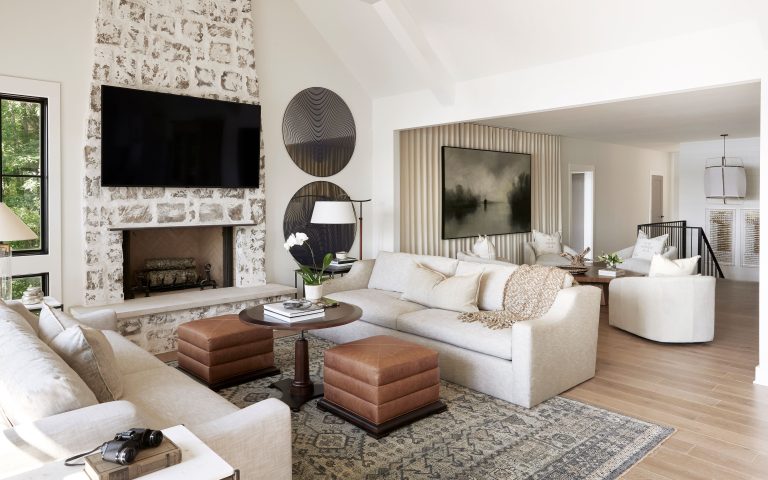Too much is never enough. Until you indulge in maximalism and are ready for a fresh start. Perhaps that's why we're seeing the pendulum swinging towards a more minimalist approach when it comes to interiors. A new aesthetic called “white chocolate” is taking the design world by storm. However, achieving a tone-on-tone look is not for novice decorators, unless of course you have the expertise. Luckily, Lauren Robbins of Lauren Robbins Interiors and Andi Morse of Morse Design have that look on lockdown. Here, we're sharing our top tips on how to wear white right.
1. Pay attention to tone
You might think achieving the tone-on-tone look is easy, but there's a story behind it that's worth noting. “When layering different shades of white, the undertones of the paint colors really work together,” Robbins says. “When choosing a color palette, it's important that the whites all come from the same family and share similar shades.”
Use gray for a more modern approach, or pair cool colors with yellow for warmth. As long as the basic tones of your paint colors tell the same story, you're guaranteed to work well within your space.
Karin Millett
2. Incorporate natural elements
When working with the minimalist aesthetic of white chocolate, you can run into problems if you don't strike the right balance with natural elements. “Whether it's a stone coffee table, a wooden console, or a wicker side table, these additional textures add depth to a monochromatic space and make it feel less flat,” says Robbins. In fact, it makes sense for designers to incorporate natural elements into whatever project they take on. Thanks to its versatility and ability to transform into almost any style.
Morse likes to employ wood tones for both contrast and a subtle pop. “Choose wood tones that mimic the architectural features of the space and complement the white-on-white look,” she says. “Accessories can also go a long way in bringing out your character.”
3. Highlight architectural features
One concern with tone-on-tone spaces is that existing features such as arched doorways and moldings may be lost. Robbins says the key is to play with the paint finish. “Using semi-gloss on beams, trim, and door and window frames highlights details in the woodwork and distinguishes them from the walls, even if the finishes are different.” Bringing architectural features to the fore can ensure individuality and charm and provide a counterpoint to a more modern aesthetic.
werner straube
4. Keep it interesting
When organizing a space around a single color family, it's important to find different ways to bring interest to the space. One way to do that is to use different shapes. “For example, some of my favorite vases are clean and white, but their sculptural shapes allow them to be displayed alone or to make a statement as a beautiful group,” says Robbins.
Another way to add visual interest is to use textures. “Using different textures of white is a great way to bring an all-white space together, leaving it warm and allowing the whites to blend beautifully,” says Morse. For Robbins, these textural differences are what give the space the necessary dimension to keep it from feeling flat.
5. Enjoy furniture
When it comes to furniture, white shades are never boring, as long as you have the right mix of interests. Morse likes to analyze the details that distinguish two pieces, even if they are upholstered in the same shade. “The combination of a beautiful white sofa and a textured white club chair is a beautiful look,” she says. “Personally, I love the skirted look of pairing unskirted items with sofas and chairs.” These subtle differences are the visual cues you need to keep monochromatic compositions from becoming boring. It's all about fun.
6. Sample shades
If there's ever a time to sample paint shades, it's when working within a single color family. Not all white and ivory tones are a perfect match. Also, not all shades will work with your lighting settings. Robbins emphasizes the importance of putting a sample on the wall before picking up a paintbrush, or planning the rest of your furniture around an unproven paint color.
“The location of the rooms in your home and the amount of natural light available all affect how the color appears on the walls,” she says. “Place large square samples on multiple walls to make sure the paint color looks right from every angle.”

